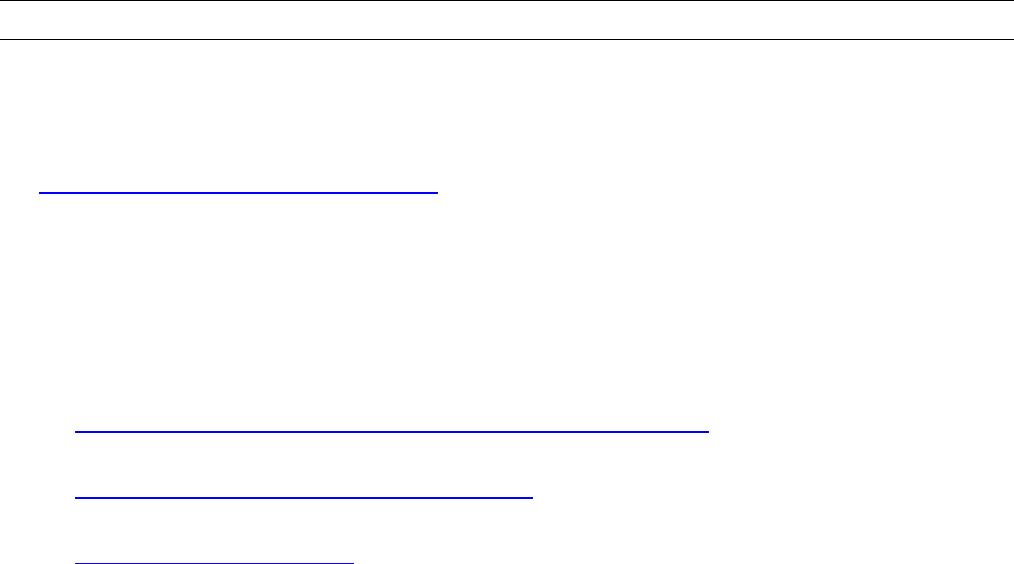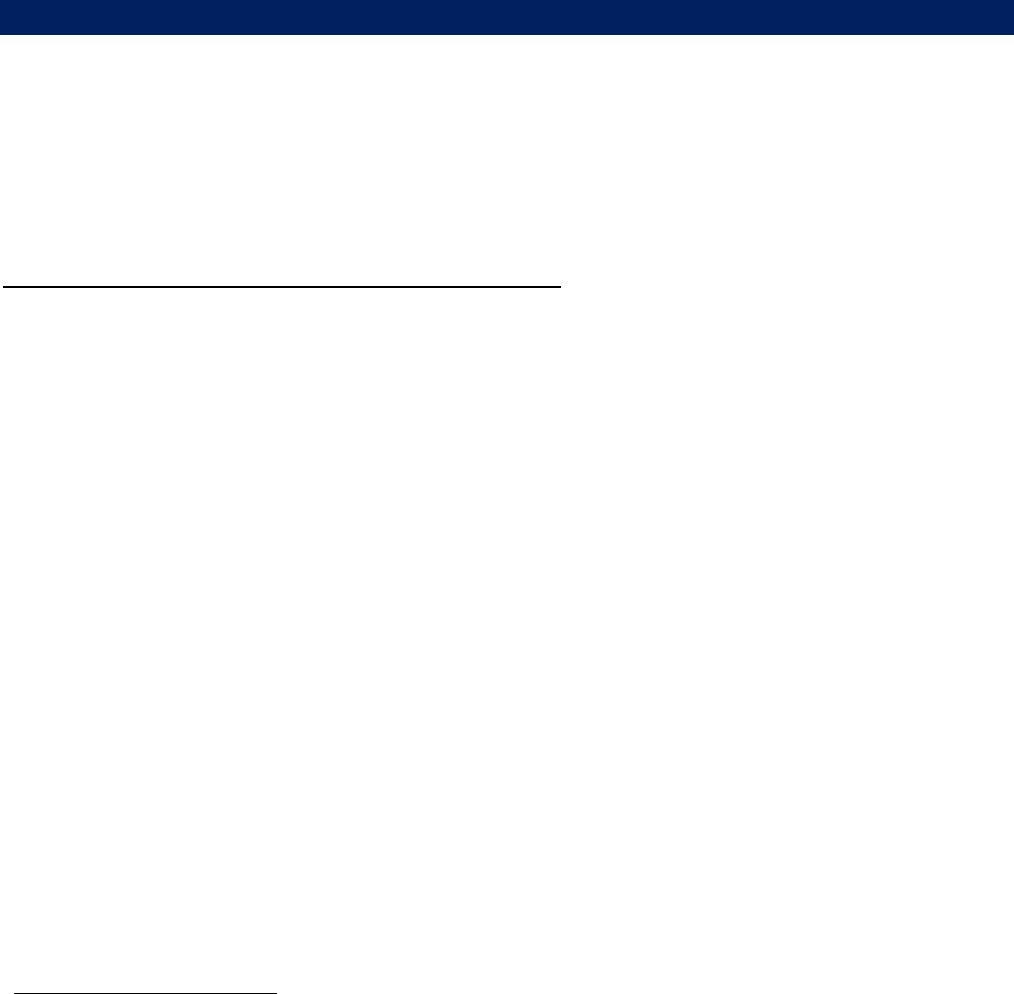
CSE-1
Last Revised: 2022 Nov 18
CSE Citation Style - Quick Guide
This quick guide summarizes rules set out by the Council of Science Editors (CSE) in Scientific Style and Format,
sometimes known as the “CSE Style Manual”. In addition to providing formatting rules, it provides guidelines
for consistency among references and their in-text citations. CSE provides a choice of three systems for citing
references within a text: Citation-Sequence, Citation-Name, and Name-Year. This guide uses the Name-Year
system, where in-text citations provide the author name(s) and year of publication to identify the sources.
If you are required to use another format or require further detail, please refer to the CSE Style Manual:
[CSE] Council of Science Editors, Style Manual Subcommittee. 2014. Scientific style and format: the CSE manual
for authors, editors, and publishers. 8th ed. Chicago (IL): Council of Science Editors. 722 p.
[Available in the Killam Library Reference Collection – Call number: REF T 11 S386 2014]
Quick Guide Contents
General Rules of the CSE Style ........ 1 Thesis or Dissertation ................ 6 Personal Communications ..... 8
Journal Article .................................. 4 Newspaper Article ..................... 7 Lab Exercise ............................ 8
Book ................................................. 5 Website ..................................... 7 Lecture ................................... 8
e-Book .............................................. 6 Blog Post ................................... 7 PowerPoint Slides .................. 8
Conference Paper ............................ 6 Online Video .............................. 7 In-text Citations ...................... 9
Technical or Government Report .... 6 Database or Dataset .................. 8 Sample References ............... 11
CSE Challenge
Write a reference using this style for any of 10.1371/journal.pone.0266938
these DOI suggestions, then use this guide 10.1016/j.plantsci.2008.03.007
to self-correct your answer(s). 10.1007/978-0-387-45972-1
General Rules of the CSE Style
1. Titles for journals: When citing a journal, use the official abbreviation of its title. (See page 3 for finding
standard abbreviations.) Use only one period at the end of the journal abbreviation.
e.g., Can J Fish Aquat Sci. Mol Cell Biol. Forest Ecol Manag.
However, if the journal title consists of one word, there is no need to abbreviate it.
e.g., Science. Nature. Bioscience.
2. Article or book title: When citing the title of a book or chapter, or an article title, capitalize the first word
and any proper nouns or adjectives. Subtitles and all other words should be in lower case letters.
e.g.,
Wetland ecology: principles and conservation.
3. Author names: Each author name is presented with the last name first, followed by a space, and then the
author initial(s) as given (but without periods).
e.g., Fazli Wahid → Wahid F You Young Kim → Kim YY
Within a reference, list author names in the same order as they are listed on the article or book. This reflects
the amount of work each researcher contributed. The author whose name appears first is known as the
“first author” or “primary author”. Separate multiple author names with commas.
e.g.,
Wahid F, Shehzad A, Khan T, Kim YY.
Dalhousie University Libraries Last Revised: 2022 Nov 18
CSE-2
Letters should match exactly how they are listed (including uppercase, lowercase, hyphens, and diacritics).
e.g., Irene de la Cruz-Pavía → de la Cruz-Pavía I Yu-Ting Chen → Chen Y-T
Mónica De la Fuente → De la Fuente M Long-Fang O. Chen → Chen L-FO
Sometimes the author is an organization or a government body (instead of personal names). An acceptable
abbreviation enclosed within square brackets can precede the full name. This will shorten an in-text citation
but still be alphabetized in the list of references as starting with “Canadian” (see reference list on p. 11).
e.g., Canadian Wildlife Federation. [CWF] Canadian Wildlife Federation.
4. Taxonomic names: Write the Latin or scientific names of organisms in capitalized italics (for the Genus) and
lowercase italics (for the species):
e.g., Drosophila Salmo salar Pinus ponderosa Rosa rugosa
When using the names of higher orders and families, capitalize the name but do not italicize:
e.g., Lepidoptera Cetacea Ranunculaceae Falconidae
5. Dates: For books and journal articles list the year only.
e.g.,
2019.
For any medium or activity that is more specifically time sensitive, include the month using the first three
letters, followed by the day.
e.g.,
2011 May 2.
Most website content can be changed in real time. This makes it challenging to determine when the content
you are viewing was first published or last edited. For this reason, it is important to provide the exact date
when you accessed and retrieved this kind of information.
e.g., [accessed 2016 Aug 24]
.
For website content without a stated date, look for a copyright date (in the footer near the very bottom).
This date can be used with the letter “c” in front of the year. Another option, if the information is obviously
up to date, is to use the current year. When no date can be discerned, state that the date is unknown.
e.g.,
c2020. 2022. [date unknown].
6. Medium designator: For non-print items that use special equipment to read them, a medium designator is
required in the reference. Include it in square brackets after the item title.
e.g.,
[DVD]. [microfiche]. [podcast]. [video].
7. Content designator: For specialized subject matter, a content designator is optional in the reference. These
informative labels provide a helpful context and can be included after the item title in square brackets.
e.g.,
[dissertation]. [editorial]. [image]. [map].
8. Geographic names: For Canadian provinces and American states, use the two-letter postal abbreviation.
e.g.,
Toronto (ON): Cambridge (MA):
For other countries, use the name as it is listed within the publication. Each country name can be spelled out
or listed using the 2-letter ISO country code.
e.g.,
Oxford (England): Oxford (UK): Delhi (India): Nairobi (KE):
Two large publishing cities are exceptions and do not require the country or state.
e.g.,
London: New York:
9. DOI: Stands for “digital object identifier” and begins with the number “10”. If a DOI exists, it should be
included at the end of the citation, using the URL format of “https://doi.org/...”.
e.g., If the DOI is 10.1371/journal.pone.0266938, use this
URL format:
https://doi.org/10.1371/journal.pone.0266938.

Dalhousie University Libraries Last Revised: 2022 Nov 18
CSE-3
10. Volume and issue numbers: Note that there are no spaces between these numbers.
e.g., 244(2):
All journals have a volume number but not all journals have a single-issue number. If issues are combined,
include both numbers. If there is no issue number, list the volume only.
e.g., 51(3-4):
607:
11. Page numbers: These numbers may or may not be obvious. Download the document or article as a PDF
if this format is available and record the specific range of page numbers.
e.g.,
604-612.
Include any prefix with the page number(s). In this example, the letter “S” stands for a journal supplement.
e.g.,
S9-S11.
If the first page is numbered page 1, the page numbers most likely correspond to the PDF and not the
journal or the book. In this case, indicate the total number of pages using the notation [about # p.].
e.g.,
[about 11 p.].
This “about” notation indicates the length of the item, recognizing that enlarging or decreasing the font size
or page magnification when printing the document may change the total number of pages.
12. Document/article number: Some journal articles are assigned a document or article number. This reflects
the emerging digital publishing environment when articles are numbered individually. If so, include it using
the format of a lowercase “e” in front of the document number, followed by the number of pages.
e.g.,
volume number(issue number):eDocument. [about # p.]. 17(5):e0266938. [about 14 p.].
Sometimes the DOI may include the article number. This occurs in the example below.
e.g., DOI:
10.1371/journal.pone.0266938 for “e0266938.”
de la Cruz-Pavía I, Westphal-Fitch G, Fitch WT, Gervain J. 2022. Seven-month-old infants detect symmetrical
structures in multi-featured abstract visual patterns. PLoS ONE. 17(5):e0266938. [about 14 p.].
https://doi.org/10.1371/journal.pone.0266938.
Verifying how to abbreviate Journal Titles
The International Organization for Standardization (ISO) has appointed the ISSN International Centre as the
authority for ISO 4 (Information and documentation - Rules for the abbreviation of title words and titles of
publications).
ISSN Tool: List of Title Word Abbreviations (LTWA)
https://marcinwrochna.github.io/abbrevIso/
1) Put the full name of the journal into the text box: Journal of Neuroscience Methods
2) Copy the "Probably standard ISO-4 abbreviation": J. Neurosci. Methods
For CSE8 titles, do not use Italics and use only one period at the end: J Neurosci Methods.
If you already have a journal abbreviation you need to confirm that it is the standardized version; use one of
these non-standardized resources to lookup the full title. Once established, put the full title into the ISSN Tool
(above) to determine the standardized abbreviation.
Alphabetical index listing all sources of cited works in the Web of Science.
https://images.webofknowledge.com/images/help/WOS/J_abrvjt.html
National Library of Medicine (NLM) Catalog: an alphabetical index listing all journals in NCBI databases.
https://www.ncbi.nlm.nih.gov/nlmcatalog/journals
Searchable database called CASSI: American Chemical Society’s Source Index.
https://cassi.cas.org/search.jsp

Dalhousie University Libraries Last Revised: 2022 Nov 18
CSE-4
Journal Article
Author(s). Year. Article title. Journal Title Abbrev. volume number(issue number):inclusive pages. URL.
Author(s). Year. Article title. Journal Title Abbrev. volume number(issue number):eDocument. [about # p.]. URL.
For journals without issue numbers, use: volume number:inclusive pages. OR volume number:eDocument.
If a DOI exists, include it at the end of the citation, written in the format of “https://doi.org/...”.
Do not just copy and paste the URL for the journal article from your browser, especially if it contains “ezproxy”.
Incorrect URL:
https://www-sciencedirect-com.ezproxy.library.dal.ca/science/article/pii/S0168945208000691
Correct URL:
https://doi.org/10.1016/j.plantsci.2008.03.007.
Check your URL by placing it into a browser (it should take you to the article without requiring authentication).
One author
MacRae TH. 1997. Tubulin post-translational modifications: enzymes and their mechanisms of action.
Eur J Biochem. 244(2):265-278.
https://doi.org/10.1111/j.1432-1033.1997.00265.x.
For 2 to 10 authors: List all authors.
Srivastava DS, Staicer CA, Freedman B. 1995. Aquatic vegetation of Nova Scotian lakes differing in acidity and
trophic status. Aquat Bot. 51(3-4):181-196.
https://doi.org/10.1016/0304-3770(95)00457-B.
More than 10 authors: List the first 10 author names, followed by “et al.”.
Adl SM, Leander BS, Simpson AGB, Archibald JM, Anderson OR, Bass D, Bowser SS, Brugerolle G, Farmer MA,
Karpov S, et al. 2007. Diversity, nomenclature, and taxonomy of protists. Syst Biol. 56(4):684-689.
https://doi.org/10.1080/10635150701494127.
Article in a journal without issue numbers: Use volume number:inclusive pages. OR volume number:eDocument.
Hong B, Grzech D, Caputi L, Sonawane P, Rodríguez López CE, Kamileen MO, Hernández Lozada NJ, Grabe V,
O’Connor SE. 2022. Biosynthesis of strychnine. Nature. 607:617-622. https://doi.org/10.1038/s41586-022-
04950-4.
Article in a journal supplement: A supplement identifier follows the issue number and pages include the letter “S”.
Savage N. 2011. Fuel options: the ideal biofuel. Nature. 474(7352 Suppl):S9-S11.
https://doi.org/10.1038/474S09a.
Online article (when you know specific page numbers)
Wahid F, Shehzad A, Khan T, Kim YY. 2010. MicroRNAs: synthesis, mechanism, function, and recent clinical trials.
Biochim Biophys Acta Mol Cell Res. 1803(11):1231-1243. https://doi.org/10.1016/j.bbamcr.2010.06.013.
Online article (when the PDF starts on page 1)
Fishman J, Taylor L, Frank I. 2016. Awareness of HPV and uptake of vaccination in a high-risk population.
Pediatrics. 138(2):e20152048. [about 11 p.]. https://doi.org/10.1542/peds.2015-2048.
Online article (when there is no PDF and no DOI): For this kind of article, include your access date.
McDaniel CJ, Crowder LB, Priddy JA. 2000. Spatial dynamics of sea turtle abundance and shrimping intensity in
the U.S. Gulf of Mexico. Ecol Soc. [accessed 2016 Aug 24]; 4(1):e15. [about 18 p.].
https://www.ecologyandsociety.org/vol4/iss1/art15/.

Dalhousie University Libraries Last Revised: 2022 Nov 18
CSE-5
Book
Author(s) or editor(s). Year. Title. Edition. Place of publication: Publisher. Extent.
The “Extent” refers to the total number of pages or the page numbering. In a reference to an entire book, this
element is optional, but in a reference to a part of a book (e.g., a chapter), the pagination of the part is required.
In some cases, the extent will include the name of the part of the book, followed by its page numbers.
One author
Keddy PA. 2010. Wetland ecology: principles and conservation. 2nd ed. New York: Cambridge
University Press.
For 2 or more authors
Glasner P, Rothman H. 2004. Splicing life? The new genetics and society. Aldershot (GB): Ashgate.
Chapter (part) of a book
Myers JH, Bazely D. 2003. Ecology and control of introduced plants. Cambridge (
England
): Cambridge University
Press. Chapter 6, Introduced plant diseases; p. 147-163.
Figure or map (part) of a book
Brner K, Polley DE. 2014. Visual insights: a practical guide to making sense of data. Cambridge (MA): MIT Press.
Figure 6.2, Science-related Wikipedia activity; p. 174-175.
Book with editor(s)
Boyd IL, Bowen WD, Iverson SJ, editors. 2010. Marine mammal ecology and conservation: a handbook of
techniques. Oxford (UK): Oxford University Press.
Chapter or article in an edited book
Gavito ME. 2007. Mycorrhizae and crop production in a world of rapid climate change: a warning call. In:
Hamel C, Plenchette C, editors. Mycorrhizae in crop production. Binghamton (NY): Haworth Food &
Agricultural Products Press. p. 293-310.
Note: In this example, ME Gavito is the author of the article called ‘Mycorrhizae and crop production in a
world of rapid climate change: a warning call’ which can be found on pages 293-310 in a book called
‘Mycorrhizae in crop production’ which was edited by C Hamel and C Plenchette.
Organization or government body as author
[CWF] Canadian Wildlife Federation. Land-use planning: an ecological approach. 1969. Ottawa (ON): Canadian
Wildlife Federation.
Entry in an encyclopedia or dictionary with author(s)
Zonn IS, Glantz MH, Kostianoy AG, Kosarev AN. 2009. The Aral Sea
encyclopedia. Berlin (Germany): Springer.
Chokolak; p. 71
.
Entry in an encyclopedia or dictionary with editor(s)
Sternberg G, editor. 2004. Native trees for North American landscapes. Portland (OR): Timber Press. Acer
saccharum [sugar maple]; p. 56-59.
No author(s) and no editor(s): Use the title as the initial element
McGraw-Hill dictionary of scientific and technical terms. 6th ed. 2002.
New York: McGraw Hill. Chamois
(Rupicapra rupicapra); p. 365.

Dalhousie University Libraries Last Revised: 2022 Nov 18
CSE-6
e-Book
Author(s) or editor(s). Year. Title. Edition. Place of publication: Publisher; [date updated; accessed date]. Notes.
URL.
Zuur AF, Ieno EN, Smith GM. 2007. Analyzing ecological data. New York: Springer; [accessed 2016 Aug 22].
https://doi.org/10.1007/978-0-387-45972-1.
Chapter or article (contribution) in an edited e-book
Rehm BHA. 2015. Microbial synthesis of biodegradable polyesters: processes, products, applications. In:
Fakirov, S, editor. Biodegradable polyesters. Hoboken (NJ): John Wiley & Sons; [accessed 2020 Nov 12].
Chapter 3:47-72. [about 26 p.]. Knovel [database].
Contribution in an online encyclopedia or dictionary with author(s) and editor(s)
Campbell D. c2020. Wetlands. In: Goldstein MI, DellaSala DA, editors. Encyclopedia of the world's biomes.
Volume 4. San Diego (CA): Elsevier; [accessed 2020 Dec 22]. p. 99-113. [about 15 p.].
https://doi.org/10.1016/B978-0-12-409548-9.11810-X.
Note: A multi-volume work may have a copyright date that differs from when the entry was last updated,
revised or modified. The corresponding in-text citation will use only one date, in this case (Campbell c2020).
If you use the copyright date, include a lowercase “c” in front of the year.
Conference Paper
Author(s) of paper. Year. Title of paper. In: Editor(s). Title of book. Number and name of conference; date of
conference; place of conference. Place of publication: Publisher. Extent. Notes.
Cameron R. 2010. Research strategy for Nova Scotia protected areas. In: Bondrup-Nielsen S, Beazley K, Bissix
G,
Colville D, Flemming S, Herman T, McPherson M, Mockford S, O’Grady S, editors. Ecosystem based
management: beyond boundaries. Proceedings of the 6th International Conference of Science and the
Management of Protected Areas; 2007 May 21-26; Wolfville, NS. Wolfville (NS): Science and Management of
Protected Areas Association. p. 503a-503e.
Technical or Government Report
Author(s) or editor(s). Year. Title. Edition. Place of publication: Publisher. Extent. Report No.: Notes. URL.
Benoit A, Dykstra A, Francis C, Gould JJ, Knockwood M, Knockwood P, Levi F, Levi A, Paul C, Prosper B. 2010.
Mi'kmaq knowledge of species at risk in New Brunswick, Nova Scotia and Prince Edward Island.
Gatineau (QC): Canadian Wildlife Service. Report No.: 510. Atlantic region.
https://publications.gc.ca/site/eng/9.568771/publication.html
Thesis or Dissertation
Author. Year. Title [content designator]. Place of publication: Publisher (often a university). Extent. URL.
Merovitch, NH. 2016. A simple automated system for appetitive conditioning of zebrafish in their home tanks
and studying underlying neural activation [master’s thesis]. Halifax (NS): Dalhousie University. 128 p.
http://hdl.handle.net/10222/72114.

Dalhousie University Libraries Last Revised: 2022 Nov 18
CSE-7
Newspaper Article
Author(s). Date. Article title. Full Newspaper Title. Section: first page (column).
Print newspaper article
Weber B. 2011 Aug 27. Caribou recovery strategy allows more development on critical oil sands habitat. Globe
and Mail. Sect. A:12 (col. 2).
Online article from a newspaper database, such as Factiva or Eureka
Weber B. 2011 Aug 27. Caribou recovery strategy allows more development on critical oil sands habitat. Globe
and Mail. [accessed 2012 Sep 5]; Sect. A:12. Factiva [database].
Note: In this example, the online version of the article did not provide a column number.
Online article from a newspaper website
McPhee J. 2020 Jan 21. Fundraising goal reached for Halifax wilderness park. Chronicle-Herald (Halifax, NS). [accessed
2020 Feb 27]. https://www.thechronicleherald.ca/news/local/fundraising-goal-reached-for-halifax-wilderness-
park-400718/.
Note: If the name of the newspaper is not geographically specific, add the name of the city.
Website
Author(s). Date. Title of website. Place of publication: Publisher; [date updated; accessed date]. URL.
Lear L. 1998. The life and legacy of Rachel Carson: Rachel Carson’s biography. New London (CT): Linda Lear
Center for Special Collections and Archives; [accessed 2016 Aug 27].
http://www.rachelcarson.org/Biography.aspx#.UE9foVF62So.
Polybrominated diphenyl ethers in fish and sediment. [date unknown]. Gatineau (QC): Environment and Climate
Change Canada; [modified 2020 Feb 7; accessed 2021 Dec 22]. https://www.canada.ca/en/environment-
climate-change/services/environmental-indicators/polybrominated-diphenyl-ethers-fish-sediment.html.
Notes: An author name and a date may not be listed. When it looks like an organization is both author and
publisher, place the organization in the publisher position. When no date is stated, look for a copyright date.
This can be used with the letter “c” in front of the year. Another option, if the information is obviously up to
date, is to use the current year. When no clear date can be discerned, state that the date is unknown.
Blog Post
Author(s). Date. Title of post [medium designator]. Title of blog. [date updated; accessed date]. URL.
Mah C. 2012 Sep 23. Ophiothela brittle stars invade the Atlantic! [blog]. The Echinoblog. [accessed 2016 Jun 12].
http://echinoblog.blogspot.ca/2012/08/ophiothela-brittle-stars-invade-atlantic.html.
Online Video
Title of video [medium designator]. Date posted, length. Title of program (if applicable). Producer. [accessed date].
URL. consider
North America's marine protected areas: protecting marine life [video]. 2012 Jun 7, 2:30 minutes. Commission
for Environmental Cooperation. [accessed 2012 Sep 4]. https://www.youtube.com/watch?v=Znc_kW3D9xA.
How trees talk to each other [video]. 2016, 18:10 minutes. TED Foundation. [accessed 2022 Aug 15].
https://www.ted.com/talks/suzanne_simard_how_trees_talk_to_each_other.

Dalhousie University Libraries Last Revised: 2022 Nov 18
CSE-8
Database or Dataset
Author(s). Year. Title [medium designator]. Place of publication: Publisher; [date updated; accessed date]. URL.
Nucleotide [database]. 1988- . Accession No. NM_006538.4, Homo sapiens BCL2 like 11 (BCL2L11), transcript
variant 6, mRNA. Bethesda (MD): National Library of Medicine (US), National Center for Biotechnology
Information. [updated 2018 Dec 23; accessed 2018 Dec 28].
https://www.ncbi.nlm.nih.gov/nuccore/NM_006538.
Stinson K, Donohue K. 2006. Invasive species mapping at Harvard Forest 2005 [dataset]. Albuquerque (NM): US
Long Term Ecological Research Network; [updated 2006 Feb 16; accessed 2020 Aug 22].
https://search.dataone.org/view/knb-lter-hfr.79.15.
Personal Communications
References to personal communications (e.g., letters, personal conversations, email messages), which are
not publicly retrievable, should be placed in the body of the paper rather than listed in the references
section. Example:
During the 2007 season, observers noted four humpback females in the bay, while the following year, only
two females were seen (2009 email message from R Comeau to the author; unreferenced).
Additional References
The CSE manual provides guidelines to assist researchers who are writing scientific papers and citing scholarly
sources, such as journal articles and technical reports. If a type of publication or resource is not included in the
official CSE guidelines, use only if permitted by your course instructor.
Lab Exercise (not included in the official CSE Guidelines)
Author (if unknown, replace with title of lab). Year. Title [content designator]. University. Department. Course
number. Extent.
The Grignard synthesis of benzoic acid. 2022. Introductory organic chemistry [lab manual]. Dalhousie University.
Department of Chemistry. CHEM 2402. Experiment 11; p. 71-84.
Lecture (not included in the official CSE Guidelines)
Relevant lecture content can sometimes be cited (consult with instructor for their preference). If it comes from
your learning environment and is not in the public scholarly domain, it would not be included in your list of
references.
e.g., In her 2020 September 30 lecture on _______, K. Watkins explained that _______.
You could also paraphrase what was said followed by a parenthetical citation:
e.g., _______ (Watkins 2020 Sep 30 lecture on species diversity; unreferenced).
PowerPoint Slides (not included in the official CSE Guidelines)
Author(s). Year. Title [medium designator]. University. Department. Course number. Extent (number of slides).
MacDonald Eddington J. 2021. Using the style guides to build your references (or literature cited) page & in-text
citations [PowerPoint slides]. Dalhousie University. Writing Centre. 44 slides.

Dalhousie University Libraries Last Revised: 2022 Nov 18
CSE-9
In-text Citations (using the year (N-Y) system)
Within the text of your paper or document, to cite an author’s work (i.e., to paraphrase and acknowledge the
source of the information), give the
author(s) last names only and year. Some instructors also require page
numbers (or other position designators) for information from a specific location in the cited document.
Each citation belongs inside the relevant sentence, within parentheses and before the period, but not necessarily
at the end of the sentence.
All sources cited in the text of a paper must be included in the list of references and
all references must be cited in the text.
Examples of citations within parentheses in the text of a paper
One author (Beals 2019)
Two authors (Glasner and Rothman 2004)
More than two authors (Benoit et al. 2010)
Organization or government as author (
Government of Canada 2021
)
No author (McGraw-Hill dictionary…2002)
Use the first word or first few words of the title, followed by an ellipsis.
No date (
Polybrominated
…[date unknown])
Works by same author(s) in different years (Gemmrich and Garrett 2008, 2011)
Separate years with a comma.
Works by same author(s) in same year (Smith 2007a, 2007b)
Use lower-case letters starting with “a”.
Works by same first author in same year (Wackernagel, Lewan et al. 1999; Wackernagel, Onisto et al. 1999)
List enough additional authors to distinguish each article.
Works by multiple authors (
Gemmrich and Garrett 2008, 2011
; Benoit et al. 2010
;
Beals 2019).
Arrange sources first by year of publication and then alphabetically by author,
separating authors with a semi-colon
Placement of in-text citations
An in-text citation should appear next to the text to which it refers. Here are several examples of where to
locate an in-text citation within a sentence:
A recent review (Beals 2019) examined the nutrient density of this crop…
Studies of large surface waves in the ocean (
Gemmrich and Garrett 2011, 2012
) have shown that…
Smith (2007b) analyzed data on a global scale, while other case studies conducted in specific locations (Zuur
et al. 2007; Keddy 2010) to demonstrate that not all statistical models were appropriate for analyzing
ecological data.
Postharvest senescence impacts the overall crop value enough that studying physical, chemical, and genetic
methods are worthwhile for extending shelf life (Chen et al. 2008).

Dalhousie University Libraries Last Revised: 2022 Nov 18
CSE-10
Citing Source Material: In-text Citations, References, Quotations, and Paraphrases
You are the person choosing which ideas to include (and which not to include) in your assignments and papers
1
.
These choices are key to your analysis and encompass not only your own ideas but also the source materials you
have chosen.
You must use your narrative to show the reader why you have chosen this source (i.e., given sufficient context to
connect the material to your own analysis) and let your reader know the source of each piece of information in
your paper using both an in-text citation and a reference list.
In CSE, as with other styles, you signal the source through the in-text citation, placed adjacent to the idea you
are citing, though not necessarily at the beginning or end of the sentence. For example:
Gavito (2007) argued idea X, while Beals (2019) argued idea Y; however, no one has considered idea Z.
At the end of the document, you must provide a full reference list entry for each source, so the reader can
locate the documents you used.
Quotations are used infrequently in academic science writing; usually, relevant material from scholarly sources
is included using paraphrases. If you do use exact wording, that wording must be enclosed in quotation marks.
Paraphrases capture and express the idea in a source in your own way and words. Paraphrasing is not a
rearranging of words or finding synonyms for words in the original passage; doing so will result in an inadequate
paraphrase, which is a type of plagiarism.
Note: You do not necessarily need to agree with the source – you should address that in your context and
analysis – but the material you have cited must accurately capture the source author’s meaning in addition to
being correctly attributed.
To create an acceptable paraphrase
1.
Decide to include something from a specific source for a particular reason
(e.g., as evidence, an example, a comparison, etc.)
2.
Think about and understand the chosen material.
3.
Put aside the source material before beginning your paraphrase.
4.
Think about (or talk out) how to explain the idea to another person in your own way and
with your own words.
5.
Write from your understanding.
6.
Read over your draft and revise to capture as fully as you can what you understand the writer meant.
7.
Go back to check the original source to ensure you have captured the author’s meaning accurately.
8.
This process is a loop and can be repeated and revised, as needed.
9.
Remember to include the in-text citation (this connects your words to where the concepts came from).
1
Have you carefully considered including a variety of relevant sources and perspectives from the published
literature? If the information you have found is not relevant, do not include it, but ask yourself if you looked
for relevant information that describes other points of view and perspectives than your own. Consider if other
works have a possible bias and distinguish facts from opinions. Finding alternative views in the scientific
literature and including them in your paper demonstrates a higher standard of writing.
The Federal Government of Canada (2021) encourages all members of the research community to address
equity issues by considering underrepresented groups (e.g., women, persons with disabilities, Indigenous
Peoples, racialized minorities, and individuals from the LGBTQ2+ community); and to support diversity by
considering differences in race, colour, place of origin, religion, immigrant and newcomer status, ethnic
origin, ability, sex, sexual orientation, gender identity, gender expression and age.
We encourage all writers to consider your research topic from the perspective of equity, diversity and inclusion.

Dalhousie University Libraries Last Revised: 2022 Nov 18
CSE-11
Sample References
The cited sources must be arranged alphabetically by author name. Within a given source, be sure to maintain
the original order of the scientists’ names. CSE8 does not require using a hanging indent to format the list of
references, but using this technique makes it easier to locate a reference, so consider it highly recommended.
Below is how the list should look aside from being double-spaced. (Single spacing was used to save space.)
References
Beals KA. 2019. Potatoes, Nutrition and Health. Am J Potato Res. 96(2):102-110.
https://doi.org/10.1007/s12230-018-09705-4.
Benoit A, Dykstra A, Francis C, Gould JJ, Knockwood M, Knockwood P, Levi F, Levi A, Paul C, Prosper B. 2010.
Mi'kmaq knowledge of species at risk in New Brunswick, Nova Scotia and Prince Edward Island.
Gatineau (QC): Canadian Wildlife Service. Report No.:510. Atlantic region.
https://publications.gc.ca/site/eng/9.568771/publication.html
[CWF] Canadian Wildlife Federation. Land-use planning: an ecological approach. 1969. Ottawa (ON): Canadian
Wildlife Federation.
Chen Y-T, Chen L-FO, Shaw J-F. 2008. Senescence-associated genes in harvested broccoli florets. Plant Sci.
175(1–2):137-144. https://doi.org/10.1016/j.plantsci.2008.03.007.
Gavito ME. 2007. Mycorrhizae and crop production in a world of rapid climate change: a warning call. In:
Hamel C, Plenchette C, editors. Mycorrhizae in crop production. Binghamton (NY): Haworth Food &
Agricultural Products Press. p. 293-310.
Gemmrich J, Garrett C. 2008. Unexpected waves. J Phys Oceanogr. 38(10):2330–2336.
https://doi.org/10.1175/2008jpo3960.1.
Gemmrich J, Garrett C. 2011. Dynamical and statistical explanations of observed occurrence rates of rogue
waves. Nat Hazards Earth Syst Sci. 11(5):1437–1446. https://doi.org/10.5194/nhess-11-1437-2011.
Glasner P, Rothman H. 2004. Splicing life? The new genetics and society. Aldershot (GB): Ashgate.
Government of Canada. 2021 Jun 22. Best practices in equity, diversity and inclusion in research. [accessed 2022
Aug 27]. https://www.sshrc-crsh.gc.ca/funding-financement/nfrf-fnfr/edi-eng.aspx.
Keddy PA. 2010. Wetland ecology: principles and conservation. 2nd ed. New York: Cambridge University Press.
McDaniel CJ, Crowder LB, Priddy JA. 2000. Spatial dynamics of sea turtle abundance and shrimping intensity
in the U.S. Gulf of Mexico. Ecol Soc. [accessed 2016 Aug 24]; 4(1):e15. [about 18 p.].
https://www.ecologyandsociety.org/vol4/iss1/art15/.
McGraw-Hill dictionary of scientific and technical terms. 6th ed. 2002.
New York: McGraw Hill. Chamois (Rupicapra
rupicapra); p. 365.
Murphy JP. 2011. Proteomics of downstream responses to growth signals in proliferating cells [dissertation].
Halifax (NS): Dalhousie University. 148 p. https://hdl.handle.net/10222/13498.
Polybrominated diphenyl ethers in fish and sediment. [date unknown]. Gatineau (QC): Environment and Climate
Change Canada; [modified 2020 Feb 7; accessed 2021 Dec 22]. https://www.canada.ca/en/environment-
climate-change/services/environmental-indicators/polybrominated-diphenyl-ethers-fish-sediment.html.
Smith KS. 2007a. Eddy amplitudes in baroclinic turbulence driven by nonzonal mean flow: shear dispersion of
potential vorticity. J Phys Oceanogr. 37(4):1037-1050. https://doi.org/10.1175/jpo3030.1.
Smith KS. 2007b. The geography of linear baroclinic instability in Earth’s oceans. J Mar Res. 65(5):655–683.
https://doi.org/10.1357/002224007783649484.
Thomas R. 2011. Introduction to ethics [PowerPoint slides]. Nairobi (KE): Strathmore University. 71 slides.
[accessed 2016 Sep 30]. https://www.slideshare.net/muiguaraji/introduction-to-ethics-first-class-ppt.
Wackernagel M, Lewan L, Hansson CB. 1999. Evaluating the use of natural capital with the ecological footprint:
applications in Sweden and subregions. Ambio. 28(7):604-612.
Wackernagel M, Onisto L, Bello P, Linares AC, Falfan ISL, Garcia JM, Guerrero AIS, Guerrero MGS. 1999.
National natural capital accounting with the ecological footprint concept. Ecol Econ. 29(3):375-390.
Zuur AF, Ieno EN, Smith GM. 2007. Analyzing ecological data. New York: Springer; [accessed 2016 Aug 22].
https://doi.org/10.1007/978-0-387-45972-1.
